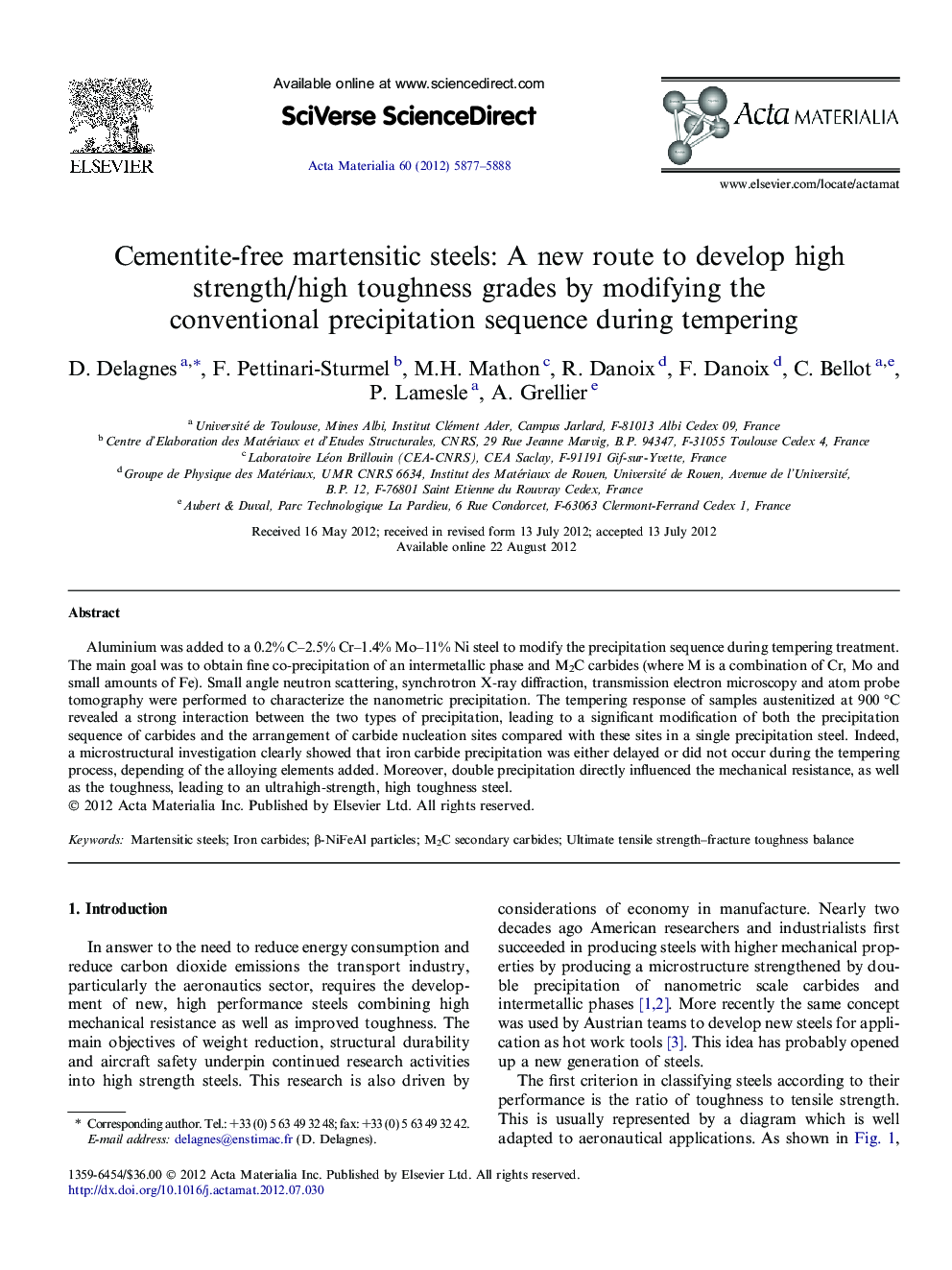| Article ID | Journal | Published Year | Pages | File Type |
|---|---|---|---|---|
| 1446604 | Acta Materialia | 2012 | 12 Pages |
Aluminium was added to a 0.2% C–2.5% Cr–1.4% Mo–11% Ni steel to modify the precipitation sequence during tempering treatment. The main goal was to obtain fine co-precipitation of an intermetallic phase and M2C carbides (where M is a combination of Cr, Mo and small amounts of Fe). Small angle neutron scattering, synchrotron X-ray diffraction, transmission electron microscopy and atom probe tomography were performed to characterize the nanometric precipitation. The tempering response of samples austenitized at 900 °C revealed a strong interaction between the two types of precipitation, leading to a significant modification of both the precipitation sequence of carbides and the arrangement of carbide nucleation sites compared with these sites in a single precipitation steel. Indeed, a microstructural investigation clearly showed that iron carbide precipitation was either delayed or did not occur during the tempering process, depending of the alloying elements added. Moreover, double precipitation directly influenced the mechanical resistance, as well as the toughness, leading to an ultrahigh-strength, high toughness steel.
